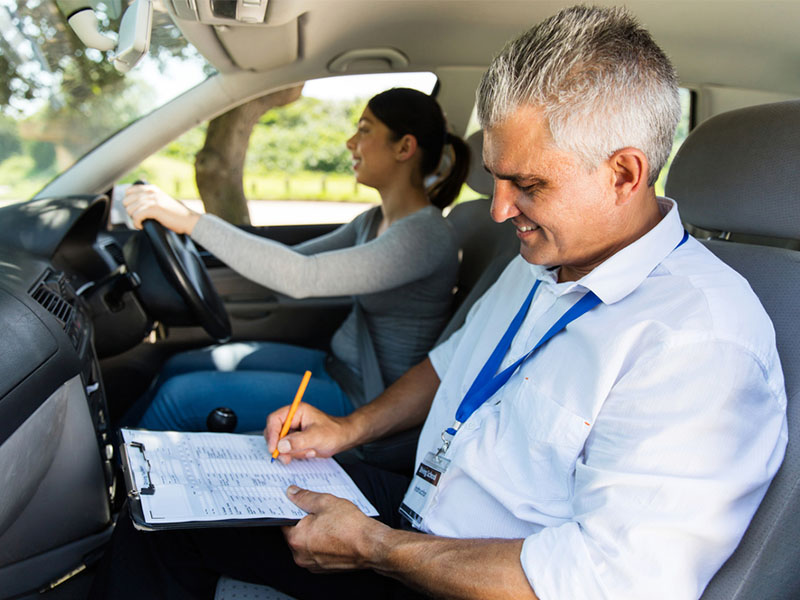How to get your driving licence in Singapore
Got a valid overseas driving licence? You can drive in Singapore for up to 12 months before you need to convert your licence. If you become a Permanent Resident (PR), however, you will need to convert your licence immediately. If your licence is not in English, you must have an International Driving Permit in addition to your licence.
To convert to a Singapore licence, you need to pass the Basic Theory Test (BTT); this involves learning local traffic rules. (Head to sgdriving.net for details.) Your application must be made in person at a driving test centre.
- Singapore Safety Driving Centre: 3 Ang Mio Kio Street 62
- Bukit Batok Driving Centre: 815 Bukit Batok West Ave 5
- ComfortDelGro Driving Centre: 215 Ubi Ave 4

The processing fee for converting your licence is $50 and the test fee is $6.50 (per attempt). Make sure you buy the basic theory book at a driving centre, bookshop or petrol station.
Editor’s tip: You do have to learn the information in the basic theory book, and there will be some trick questions in the test, so don’t be complacent. The failure rate is high! There are 50 questions on the test, and you have 50 minutes to answer them. To pass, you have to get at least 45 questions correct.
Other need-to-know tips for driving in Singapore
# In-vehicle Units, the ERP and Parking Coupons
The grey box mounted above your dashboard is the card-reading In-vehicle Unit, or IU. You need to buy a NETS Motoring Card or CashCard (the latter is slowly being phased out) from a petrol station or convenience store. The cards store value and are used to pay for car parks (the fee is debited automatically at the exit barrier) and Electronic Road Pricing (ERP). ERP is charged on expressways and in the central zones, and rates vary according to the location and time of day.
Singapore is in the process of getting rid of their parking coupon system, so you’re only likely to need them when street parking. The Parking.sg app is replacing the older system. However, if you want to purchase some, they can be found at convenience stores islandwide.
# Off-Peak Car Scheme
A red number plate means the driver is part of the Off Peak Car Scheme (OPCS), an initiative to encourage car owners to drive outside peak times. In return, they save on car registration and road taxes. (Off-peak drivers can drive all day on Saturdays, Sundays and public holidays and on Mondays to Fridays 7pm to 7am). A $20 e-Day Licence is required for driving an off-peak car at any other time. This system has been in place since 2010, but there has been a significant decline in the numbers of off-peak cars on the road in the past couple of years.
# Dangerous Driving
If you’re found with more than the legal limit of 35mg of alcohol per 100ml of breath, or 80 milligrams per 100ml of blood (.08 as it’s commonly known), there are hefty fines, the possibility of a jail term, and lengthy disqualifications of driving licences. See the Road Traffic Act for more information.
# Singapore’s 10 main roads
- AYE – Ayer Rajah Expressway
- BKE – Bukit Timah Expressway
- CTE – Central Expressway
- ECP – East Coast Parkway
- KJE – Kranji Expressway
- KPE – Kallang-Paya Lebar Expressway
- MCE – Marina Coastal Expressway
- PIE – Pan Island Expressway
- SLE – Seletar Expressway
- TPE – Tampines Expressway
The next expressway
Construction is underway on the NSC (North-South Corridor), which will become Singapore’s 11th expressway when it opens in a few years’ time (est. 2027). The road will link the city centre and the island’s east coast with Woodlands, Sembawang, Yishun, Ang Mo Kio, Bishan and Toa Payoh.
Singapore also has five “semi-expressways”, which are scaled down versions of the 10 main roads. They are Bukit Timah Road, Jurong Island Highway, Nicoll Highway, West Coast Highway and the Outer Ring Road System.
What about owning your own car?
If you’re looking at how to get your driving licence in Singapore, then then chances are you might want to buy a car, too. A word of warning: this could be one of the more confusing and frustrating things you do! You first need to get to grips a wide range of acronyms that are used.
OMV – Open Market Value
this is roughly the base value of the car at the time of import. Singapore Customs places an OMV on each vehicle, and this determines many of the additional taxes.
ARF – Additional Registration Fee
On top of the $220 basic Registration Fee (RF), you also have to pay an ARF, which is 100 percent of the OMV and upward (the higher the OMV, the higher the ARF), plus a 20 percent excise duty. In addition, you need to pay a seven-percent Goods and Services Tax (GST), and road tax. Road tax is reduced if you purchase a hybrid or electric car, or a car that runs on natural gas.
COE – Certificate of Entitlement
To own a car, you need a document known as a COE, which is valid for ten years. The government uses the COE system to control the number of cars on the road, and only releases a limited number each year. You can bid for your own COE – tenders are called for twice each month – or you can leave it up to your dealer. The cost of a COE rises or falls according to demand; it can range from a dollar to $100,000 or more.
Although the cost of buying a car in Singapore will initially seem much higher than at home, bear in mind that when you sell, export, or scrap your car, you will recoup the unused portion of the COE. If you sell your car after two years, for example, your COE will still be valid for eight years, and you will recoup 80 percent of its cost. You will also recoup between 50 and 75 percent of the ARF. Financing options can be surprisingly affordable, with typical interest rates between 2.25 percent and 2.75 percent per annum. Loans can be repaid over ten years with a low deposit, if any, required up front. All vehicles in Singapore must carry at least third-party insurance.
Editor’s tip: The current COE (as of October 2023) for a Category A vehicle is a whopping $105,000!
Tips from readers: Is it worth having a car here?
“While we’ve never had a car here, with the recent rise in taxi fares, we decided to explore renting options (like blueSG) – especially for weekends when we need to get the kids to different places.” – Emőke
“Expat packages can include car expenses. Personally, though, I wouldn’t buy a car here. The public transport system is one of the best in the world, and taxis and ride-share drivers are cheap.” – Richard
“Yes, it’s absolutely worth having a car here, especially now that ridesharing services have become so expensive. The taxi bill gets crazy! We keep it real by driving an old honda stream, which is 14 years old, and we’ve already had to renew its COE in 2019 for another 10 years.” – Cherie
“I had an Audi Q5 but sold it during COVID when my commute stopped – I bought it second-hand and even after eight years I still got half the original cost back, which made it less than a thousand dollars a month to run, including fuel and insurance. That’s easily less than I used to spend on taxis. So, do your research, as it can be more affordable than most people think.” – Charlotte
“We chose a car for convenience, and in the end buying one was cheaper long term than renting one. At the same time, taxis are relatively cheap here and the transport system (both MRT and buses) is great so it’s easy to choose what works for you depending on your personal circumstances.” – Talia
“Overall, cars are very expensive, and public transport is accessible and convenient. But, once you start driving, it’s hard to go back to public transport again. It’s just too convenient! We own our car, although I believe renting may be cheaper.” – Namrta
“It depends on your work location but I suggest using public transport; cars are expensive.” – Nicolas
For more helpful tips, head to our Living in Singapore section.





